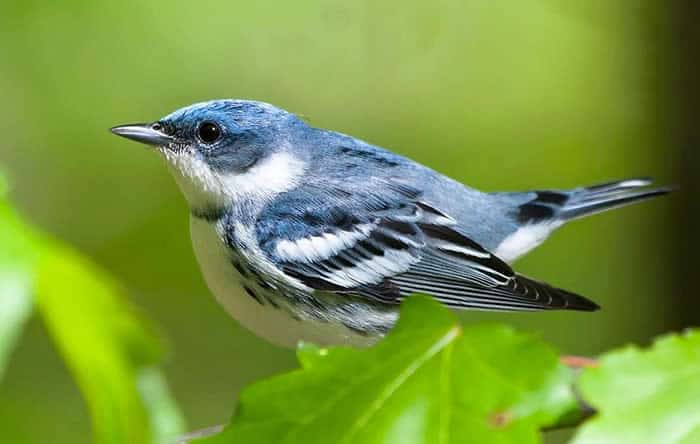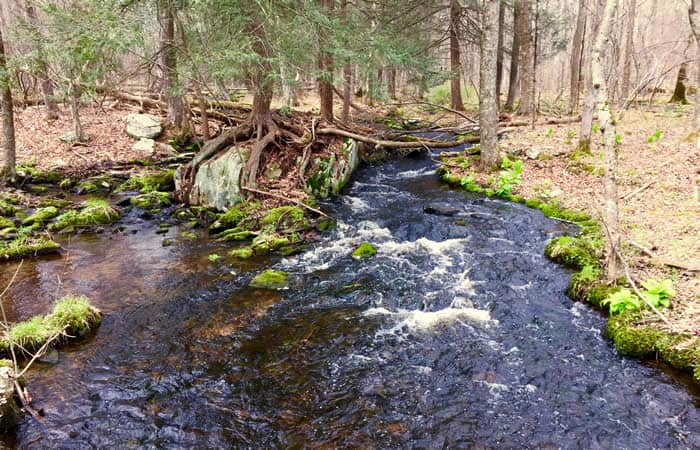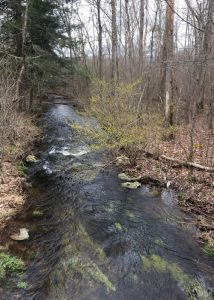
Delaware State Forest's warbler habitat

IF YOU GO
Where: The forest is in several tracts in Monroe and Pike counties.
From Route 447 in Price Township, take Snow Hill Road and go 3.3 miles. Straight ahead of you, just before Snow Hill takes a hard turn to the right, is a gravel road with a sign – Angler Road. Take Angler Road 1.1 miles to the trailhead on your left, across from a small brown sign that says 16 Mile Run Road.
Note: This route works from the Stroudsburgs, but it is slightly shorter to take Wooddale Road from Analomink. Then follow Schoolhouse Road 6.5 miles to Snow Hill Road. Go right to Angler Road as above.
GPS: 41 10 22.188 N 75 10 4.3716 W
Trail information: The trail is often rocky and steep and may be wet in spots. Bring a hiking stick, water, and binoculars. Wear boots and dress for the weather.
KNOW BEFORE YOU GO:
- Hunting permitted. Wear orange during hunting season.
- No restrooms or trash cans at the hike location. Pack out anything you pack in.
- Delaware State Forest consists of 83,915 acres of varied forested terrain with trails, creeks, wetlands and campsites. Most camping requires permits.

A walk in woods that work for warblers
By Carol Hillestad
Think of a summer sky in afternoon. What colors come to your mind’s eye? Probably not just one, solid hue, but a flutter of colors with names like azure, indigo, slate, ice-blue, iridescent teal.
These are the colors of a tiny bird, the cerulean warbler. It weighs as much as a paperclip. It flies more than 4,000 miles to winter in the Andes Mountains. And in May, it returns to the Pocono forest.
But not just any forest. For nesting and raising their young, cerulean warblers need shrubby, low, open growth such as follows a fire or timber harvest. At the same time, close by, they need mature forest for perching, defending territory, and foraging for food.

At the trailhead, I met district forester Tim Dugan. As we walked a wide, rocky woods road into the management area, he described “the mosaic of forests” at different stages of growth that these birds need.
On one side of the trail, the woods were tall and dense with saplings and older trees. Far below, beavers had dammed an unnamed creek to form a gleaming pond. On the other side, the woods were open and sunlit. There was a scattering of mature trees and a rich new undergrowth of blackberry and shrubby regrowth sprouting from the stumps of felled oaks, against the backdrop of high rock bluff.
Just before the Sixteen Mile fire in 2016, this area had been timbered. You can see some charred trunks, but the undergrowth has regenerated, creating perfect warbler nesting habitat.
“What we do here coincides with existing management practices,” Tim said. “We manage timber sales to encourage early succession forest in a mosaic of more mature stands. That provides the mixture of habitat that the birds need.”
Tim works with graduate students who come for the summer to check for the birds. “As we improved the habitat, cerulean and golden-winged warblers started moving in, and their numbers locally rebounded,” he said.
Nearby mature mixed hardwood forest is a smorgasbord for the birds. “White oaks can host a hundred species of moth and butterfly larva,” he said. “The hungry birds keep us from being overwhelmed by caterpillars.”
We continued up toward the rock bluff. As we got higher, patches of pitch pine, scrub oak and reindeer moss appeared. Two white-tailed deer strolled along the high ridge. In the valley below, hidden from view, Sixteen Mile Run drains into Bushkill Creek, headed for the Delaware River and the Atlantic.
It’s too early yet for the birds. But heading back to the trailhead, spring flowers abound — Quaker ladies, trout lilies, violets, wood anemone. Tim points out the false hellebore in the wetlands we pass. The shadbush and hazy yellow spicebush are blooming.
In a few weeks, I’ll be back. Dr. Jeff Larkin, an expert on forest bird ecology who works with Tim, will lead an early morning walk through this landscape. Will the birds be back? Come on along, and find out.
Carol Hillestad is a hike leader and writer for Get Outdoors Poconos, a grant-funded series administered by Brodhead Watershed Association. Special thanks to Tim Dugan, district forester, Bureau of Forestry, Delaware State Forest; Dr. Jeffery Larkin, professor of wildlife ecology and conservation at Indiana University of Pennsylvania and forest bird habitat coordinator for American Bird Conservancy; National Resource Conservation Service, U.S. Department of Agriculture.
Comments from other hikers:
Be the first to add your comment for this hike.